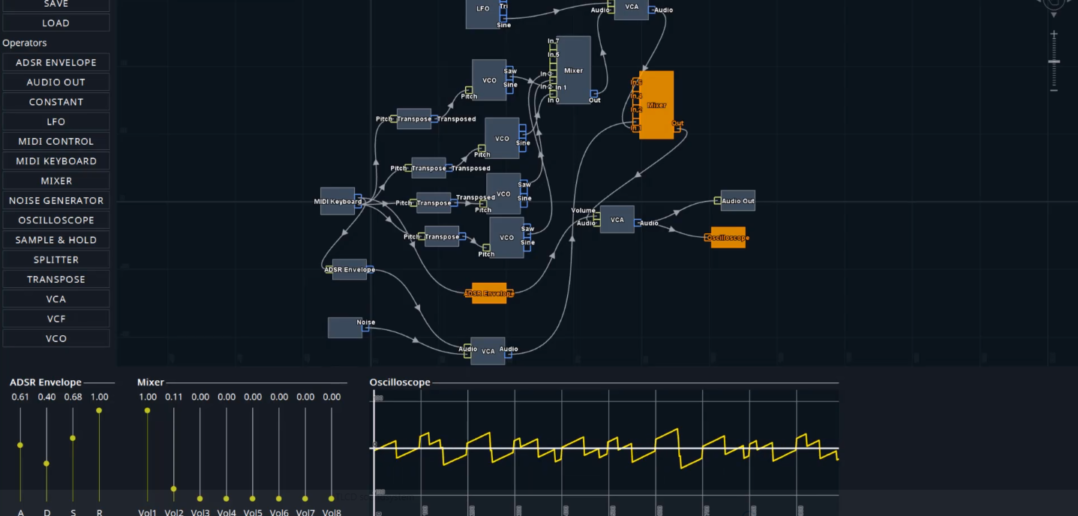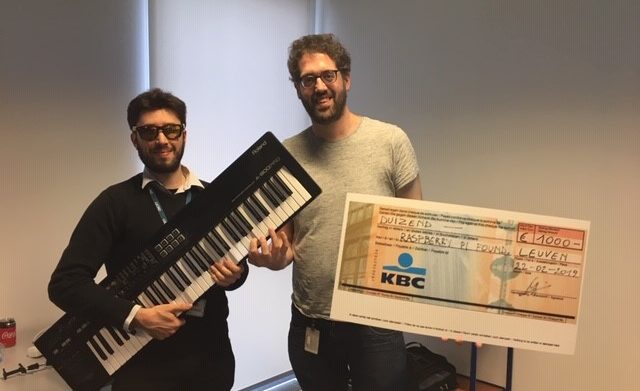The employees in Hexagon’s Leuven office in Belgium were given the opportunity to put their creativity and development skills to the test at our internal Hackathon on February 21-22. During the event, each team had just 24 hours to develop the project of their dreams.
Team TLCD Soundsystem was so impressive during the competition that that they received the Jury Prize, the top honor from the judges!
For their Hackathon project, teammates Daniel Balog and Tom Nuydens created a reusable graphical dataflow-editing framework as a sound system. The sound system was based on the editing capabilities and non-georeferenced view of the LuciadLightspeed desktop solution.
Tom and Daniel strived to build something that was flexible and reusable by leveraging existing LuciadLightspeed capabilities, such as the editing and data model APIs. Interestingly, the user interface they created closely resembles our Spatial Modeler graphical interface, which is used for building and running geoprocessing workflows in select desktop products.
Configuring the TLCD Soundsystem Display

In TLCD Soundsystem, a MIDI keyboard (pictured in the feature image) is connected and used to control the system. The user can then graphically assemble a synthesizer sound using operators such as oscillators, noise, amplifiers, and so forth. To implement the MIDI input and audio output operators, the team used the API that is available in the Java Development Kit (JDK) within the package javax.sound.
The most interesting operator they created is undoubtedly the oscilloscope; it opens an additional non-georeferenced LuciadLightspeed view and visualizes the incoming audio samples on a graph. This is done by creating a polyline and updating it for every frame. The oscilloscope can be inserted at any location in the operator model, which makes it a great visual debugging tool.
The rest of the team’s operators are mostly available in real-world synthesizers: oscillators, an ADSR envelope, noise, sample & hold, and so forth. They also included a few small utilities such as a mixer.
You can see the application in action in the video below. The graph itself (including the oscilloscope) is a LuciadLightspeed view. The panel on the left lists the operators that are available to add to the graph. The panel below shows a view similar to a properties panel for the selected operators.
Taking Home the Top Prize
Congratulations to TLCD Soundsystem for taking home the Jury Prize with this outside-of-the-box demonstration of LuciadLightspeed’s capabilities!
As the winners, Daniel and Tom received a check for €1000, which they graciously donated to the Raspberry Pi Foundation. This charity works to put the power of computing and digital making (or creating products with digital technology) into the hands of people all over the world.
We at Hexagon are proud of your work, team. We also hope to hear some cosmic soundscapes from you at the next office party.
If you want to find out more about LuciadLightspeed’s software components, take a look at the Luciad Developer platform.















